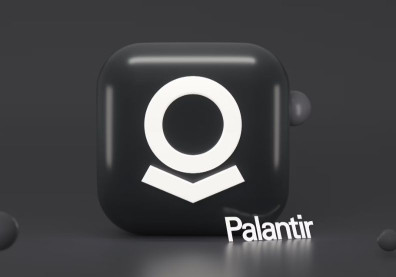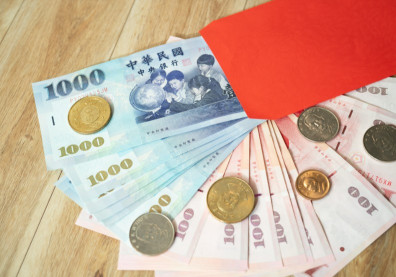With rapid technological change posing ever more intense competitive challenges, companies are often advised to scrutinize their portfolios and eliminate unprofitable products. Every product, the reasoning goes, must stand on its own bottom line. That, however, may be exactly the wrong mantra for these times. A broader portfolio of products ¡V even if some are, for a time, unprofitable ¡V often can help a company capture more value.
To understand why breadth matters, it helps to look at how today¡¦s strategic landscape is changing. New, less expensive production technologies and ease of entry into some markets have led to a proliferation of products and services; at the same time, the cost of reproducing and distributing certain classes of products has dropped dramatically.
科技的快速變革,使企業面臨更激烈的競爭,因此常有人建議,企業要檢視產品組合,淘汰無法獲利的產品,因為每一種產品都應該自負盈虧。但現在這句話可能適得其反。更廣泛的產品組合,往往可以使公司獲得更多價值,就算某些產品一時之間尚未獲利也無妨。
想了解為什麼產品廣度很重要,先要了解現今的策略樣貌如何變化。由於成本較低的新生產技術出現,以及市場進入障礙降低,以致各種產品與服務激增;同時,某些等級產品的複製與配銷成本也大幅下降。
The result is a heightening of two core strategic challenges facing businesses:getting noticed and getting paid.
How is a brand to get noticed when there are some 13,000 U.S. mutual funds to select from and, as Barry Schwartz notes in The Paradox of Choice, supermarkets can offer 175 varieties of tea bags and 285 kinds of cookies? In information industries, the problem is particularly acute: U.S. publishers produce more than twice as many books today as they did a decade ago, and the volume of information our society generates is far outstripping our ability to consume it all.
結果,企業在策略上面臨的兩項關鍵挑戰升高了:如何引人注意,以及如何讓顧客付費。
市面上選擇那麼多,品牌要如何才能受到注意?美國大約有13,000檔共同基金可供選擇;貝瑞.史瓦茲(Barry Schwartz)在《只想買條牛仔褲:選擇的弔詭》(The Paradox of Choice;繁體中文版由天下雜誌出版)中也提到,超市裡有175種茶包和285種餅乾,那麼品牌要如何脫穎而出?在資訊相關的各種產業中,下面這個問題尤其重要:美國的出版社現在出版的書,數量是十年前的兩倍以上,而且我們的社會產生的資訊量,遠遠超過我們全部吸收消化的能力。
And how is, say, a music company to recover its investments when people can cheaply copy and distribute the products? Media organizations are currently having the most trouble getting paid ¡V think of big metropolitan newspapers and the competition from free dailies and free online content such as blogs. Other types of businesses face similar problems ¡V witness the challenge to Microsoft by Linux.
It¡¦s tempting for companies to try to meet the twin challenges of getting noticed and getting paid by shedding product lines, but successful firms have shown that the best approach is often the opposite one: to expand and extend the product portfolio. Expanding it increases not only the chances for a big win but also the number of other products that can benefit from a hit¡¦s popularity.
The portfolio approach has been used for years in the traditional supermarket ¡V that brawling arena of product proliferation ¡V in such tactics as umbrella branding and loss-leader pricing.
那麼,如果大家可以很便宜地複製並且傳輸唱片公司的產品,唱片公司要如何回收投資?媒體目前遇到的最大麻煩是要顧客為訊息付費,面臨大型的都會報紙、免費日報和免費部落格等線上內容的競爭。其他類型的行業,也面臨了類似問題,例如微軟面對Linux的挑戰。
企業常想要以刪減產品線的做法,來達成引人注意與收費的雙重目標,但成功企業的經驗顯示,最好的做法往往相反;其實應該擴大並延伸產品組合。擴大產品線不只提高大獲成功的機率,暢銷產品的高人氣,也可讓更多產品受惠。
這種產品組合的做法,在傳統超市已經行之有年,傳統超市正是充斥許多產品的地方,他們用的策略包括「品牌傘」行銷策略(umbrella branding)、虧本降價促銷(loss-leader pricing)等。
Indeed, the technique is showing up in a range of industries.
Apple¡¦s expansion of its portfolio to include the iPod has not only launched a whole economy of ¡§i-¡¨ add-ons, including the iPhone, but also boosted sales of Apple¡¦s existing computers. The Indian network Star TV saw its prime-time viewer share increase from less than 5% to more than 80% in one year after a single hit show, Kaun Banega Crorepati ( the Indian version of Who Wants to Be a Millionaire) , helped all its productions become more popular. The benefits can even extend to other firms. Author Dan Brown had written three books with mediocre sales prior to his best seller The Da Vinci Code. When his former publishers then re-released the older works, they became best sellers as well.
其實,這種產品組合的手法在很多產業都出現過。
蘋果公司(Apple)的產品組合擴大到iPod,不只啟動了包括iPhone在內的整組「i」系列附加產品,還推升了蘋果原有的電腦產品的銷售。星空傳媒電視網(Star TV)在印度推出一檔熱門節目Kaun Banega Crorepati(印度版的「誰想成為百萬富翁」〔Who Wants to Be a Millionaire〕),結果在之後一年內,黃金檔的收視率從不到5%竄升到80%以上,也讓星空傳媒的所有節目都更受歡迎。這種利多效應甚至會嘉惠其他公司。作家丹.布朗(Dan Brown)在出版《達文西密碼》(The Da Vinci Code)之前,曾寫過三本書,但銷量平平。等到《達文西密碼》暢銷後,出版公司重新出版那些舊作,結果也變成了暢銷書。
The portfolio approach can also help a company tackle the getting-paid problem. When there¡¦s price pressure in a company¡¦s core business, a product-oriented strategy would be to try to boost the return from each product by, for example, giving up price-sensitive customers and pursuing those who are willing to pay more. With a portfolio approach, a company doesn¡¦t have to do that ¡V it can protect itself by expanding into sectors that make more money when prices of the company¡¦s core products fall. Recording studios were kicking themselves for not seeing the opportunity in products such as MP3 players that were adjacent to easily duplicated CDs. Many media firms, such as the Norwegian company Schibsted, have aggressively expanded into complementary businesses such as free newspapers and online classifieds.
With technology moving so quickly that virtually no manager, engineer, or technologist can predict next year¡¦s winning and losing products, a portfolio approach presents greater opportunities for creative solutions than does fighting with your competitors on a product-by-product level.
產品組合的做法,也可以幫忙解決顧客付費的問題。當公司的核心業務有價格壓力時,以產品為導向的策略,可能會試圖提高每項產品的利潤,例如放棄對價格敏感的顧客,追逐那些願意付更多錢的人。如果採用產品組合的做法,公司就不必如此,而是跨足到其他更賺錢的領域,即使核心產品的價格下跌,也不會受到影響。像音樂製作公司就很懊悔,當初沒有看到與易複製的CD產品市場很接近的MP3播放器商機。許多媒體則是積極擴張,跨足互補性的業務。例如,挪威的Schibsted報社就經營免費報紙、線上分類廣告等。
科技的變化如此迅速,根本沒有經理人、工程師或技術專家能夠預測,明年有哪些產品會勝、哪些會敗。產品組合的做法可以提供更多機會,讓你用創意的方法解決問題,而不只是和競爭對手在一對一產品的層級上廝殺。
BOX1學單字
intense強烈的,劇烈的
scrutinize詳細檢查;細看
portfolio投資組合
unprofitable無利益的,賺不到錢的
reasoning推論, 論據
breadth寬度; 廣度
proliferation激增;擴散
heightening升高;變強
paradox自相矛盾的議論
acute劇烈的; 嚴重的
outstrip超過,勝過
metropolitan大都市的
shed擺脫,去除
popularity普及,流行
technique技巧;技術
mediocre中等的;平凡的
duplicate複製
complementary互補的
classified分類廣告
technologist科學技術人員
延伸閱讀
loss-leader pricing犧牲品定價
文│周宜文
本文談論產品策略和行銷策略的基本概念。例如,umbrella branding品牌傘策略,係以企業名稱背書系列產品品牌,此策略的優點在於塑造統一形象,降低行銷成本,並以企業信譽持續提升品牌價值。像是大家熟悉的早餐穀片家樂氏(Kellogg’s),就是品牌傘行銷策略的專家,每個分支品牌不僅支撐著家樂氏的品名,同時也受到家樂氏品名的保護。
還有,行銷策略:loss-leader pricing犧牲品定價。係對於產品或服務,訂定超低價格(甚或遠低於成本),來吸引顧客上門,再透過其他商品或服務之購買,彌補此項犧牲商品,一般又將之稱為「帶路貨」,亦即將客人帶進企業賣場之產品。
這種行銷手法和品牌策略當然不只適用於傳統超市,消費電子和媒體、出版業等許多行業也都有採用。美國家庭修繕連鎖龍頭家得寶(Home Depot)的合夥創辦人伯尼馬庫司(Bernie Marcus),就曾經說過:「我的商品售價太便宜,便宜到要被捉起來關啦!」他當然沒有被捉起來關,不過,這句話卻成為行銷學的名言。
作者還提到「Schibsted」這家報社。它是挪威最大的媒體公司,與網路成功接軌,堪稱新聞界的模範。Schibsted報社善加利用歷史悠久的品牌,架設自己的官方網站,成為最多人瀏覽的北歐網站之一。此外,Schibsted也開創其他的網路新事業;例如,可以跟Google相抗衡的搜尋引擎Sesam,以及分類廣告入口網站FINN.no。Schibsted在2007年第三季締造創報一百五十多年來最佳的同期業績,不僅實體報紙的業績維持強勁,網路業務更擴大營收。該集團第三季的營運利潤達 2.57億挪威克朗(約台幣77.675億元)。網路業務第三季的營收成長40%,占集團營運利潤的56%。
最後,回到品牌管理的基本概念,一個便是作者主張的產品線愈廣愈賺錢,另一個則是產品自我蠶食(cannibalization)。後者是指同一家公司推出一項類似產品的時候,造成自身某項產品銷售的下降,從而與現有的產品相互競爭並奪走市場占有率。特別是新舊產品間替代程度愈高,蠶食情形恐相當嚴重。蘋果公司經常被拿來做為研究範例,例如有些分析師認為蘋果早期的iPod系列,便是刻意讓產品自我蠶食,以加速消費者升級。
至於最近的iPhone,推出前,有人擔心它將與最新款的iPod爭奪市占,結果非但沒有,反而成為另一項「帶路貨」,為麥金塔電腦創造更多的銷售。
















